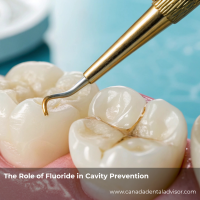The Slow Burn: How Smoking Impacts Oral Health Over Time
Smoking doesn’t just stain your teeth and give you bad breath—it alters the entire ecosystem of your mouth. Here’s what unfolds with time:
Year 1–5: The Silent Damage
-
Nicotine and tar begin to stain enamel and reduce saliva production.
-
Gums start to recede slightly, but inflammation remains hidden due to nicotine’s effect on blood flow.
-
Bad breath becomes a norm due to bacterial imbalance.
Year 5–10: Escalating Effects
-
Periodontal (gum) disease sets in, as the immune system weakens in the oral environment.
-
Bone loss around teeth begins quietly, often without symptoms.
-
Delayed healing becomes noticeable after dental procedures.
Year 10 and Beyond: The Tipping Point
-
Teeth become loose, leading to tooth loss.
-
Oral cancer risk skyrockets, especially in heavy, long-term smokers.
-
Implant failure rates increase drastically in smokers due to poor tissue health.
Rewriting the Story: The Power of Individualized Care Plans
Mark’s turning point came during a routine dental exam. A new hygienist didn’t just hand him a pamphlet—she talked to him, asked about his habits, fears, and goals. From that conversation, a tailored care plan was born. And it changed everything.
Here’s how individualized care plans work their magic:
1. Personalized Risk Assessment
Not all smokers have the same oral health risks. A tailored approach considers:
-
Smoking history (how long, how much)
-
Co-existing conditions (e.g., diabetes, dry mouth)
-
Lifestyle factors (diet, stress, alcohol use)
By evaluating the whole picture, dental professionals can create a roadmap that fits you.
2. Customized Treatment Schedules
Frequent check-ups and cleanings—sometimes every 3–4 months—help:
-
Catch early signs of gum disease
-
Manage plaque and tartar more aggressively
-
Monitor healing and inflammation closely
Mark, for instance, shifted to quarterly visits and saw notable improvements within the first year.
3. Targeted Interventions
Care plans often include:
-
Antimicrobial rinses to reduce bacterial load
-
Prescription fluoride toothpaste to fight decay
-
Smoking cessation support built into dental visits
-
Nutritional counseling to support gum health
This kind of tailored intervention not only treats issues—it prevents them.
4. Enhanced Patient Compliance
Why do personalized plans work better? Because patients feel seen. When patients understand how every step fits their unique situation, they’re more likely to follow through. Mark began using a reminder app for his oral hygiene routine—something suggested by his hygienist who noticed he was tech-savvy.
5. Long-Term Outcomes That Stick
The goal isn’t just to put out fires—it’s to prevent them. With individualized care, patients are less likely to:
-
Lose teeth prematurely
-
Need complex surgical procedures
-
Experience chronic oral pain or discomfort
For Mark, this meant regaining confidence in his smile and finally kicking his smoking habit, supported not just by doctors but by a dental team that believed in him.
A Snapshot of What an Individualized Plan Might Include
| Element | Tailored Strategy Example |
|---|---|
| Risk Assessment | Smoking duration, oral hygiene habits |
| Cleaning Schedule | Every 3–4 months instead of biannually |
| In-Office Treatments | Deep cleanings, antimicrobial rinses |
| At-Home Routine | Custom toothpaste, electric brush, floss plan |
| Smoking Cessation Support | Referral to counselor, nicotine alternatives |
| Monitoring | Photos, X-rays every 6–12 months |
Conclusion: It’s Never Too Late to Start Fresh
Smoking takes a toll on oral health—but you’re not stuck in that story. Individualized care plans don’t just treat problems—they rewrite the narrative. Whether you’re a current smoker, former smoker, or caring for someone who is, remember: personalized attention and consistent support can turn the tide.
Mark did it. So can you.
FAQ: Smoking and Oral Health
1. Can quitting smoking reverse oral health damage?
Some damage, like gum inflammation, may improve with smoking cessation and proper care. However, bone loss and advanced gum disease often require specialized treatment.
2. How often should smokers visit the dentist?
Every 3–4 months is ideal for smokers, especially those with signs of periodontal disease.
3. Are electronic cigarettes safer for oral health?
E-cigarettes avoid tar but still contain nicotine, which reduces blood flow and may still contribute to gum problems and delayed healing.
4. What symptoms should smokers watch for?
Persistent bad breath, bleeding gums, loose teeth, or any white/red patches in the mouth should be evaluated by a dental professional immediately.
5. Can dental professionals help with quitting smoking?
Yes! Many dental offices offer cessation support or referrals to programs that help patients quit for good.
6. Is it too late for older smokers to benefit from a personalized care plan?
Absolutely not. No matter the age or smoking history, an individualized plan can improve comfort, function, and confidence.











Leave a Reply